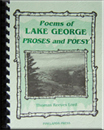I vividly remember as a child walking with my grandfather through his farm's fields and woodlands. He seemed so knowledgeable to me, pointing out the plants and animals that had taken up residency on his acreage. Every living thing we passed came with its own story, most of which he said he had witnessed somewhere on his farm. Being a planter, his best stories focused around the vegetation.
Grandpa seemed to know everything there was to know about plants; He could recite each of their common names and often their Latin epithet as well. He knew their potential consumptive and medicinal potentials of each species, and often described practical uses for the plant that one could not imagine. One of the things I remember being most surprised with was his passion for the lower, less significant plants that included the ferns, clubmosses, horsetails and quillworts. It was from my grandfather that I learned about gametophytes when we hunted prothalli among the sedges and reeds in the two marsh of the farm.
My grandfather told me folk stories about adder's tongues, spleenworts and grape ferns as he led me to their haunts. I learned that the gray tips of clubmoss hold explosive spores and that horsetails contain so much silicon that they were used as scouring pads by our ancestors.
We gathered fiddleheads that my grandmother saute for dinner and grinded the toxic stems of bracken to kill the vermin around the corn bin. Those were special years for me and established an interest and curiosity for ferns and their allies that remains with me today.
- Thomas R. Lord

